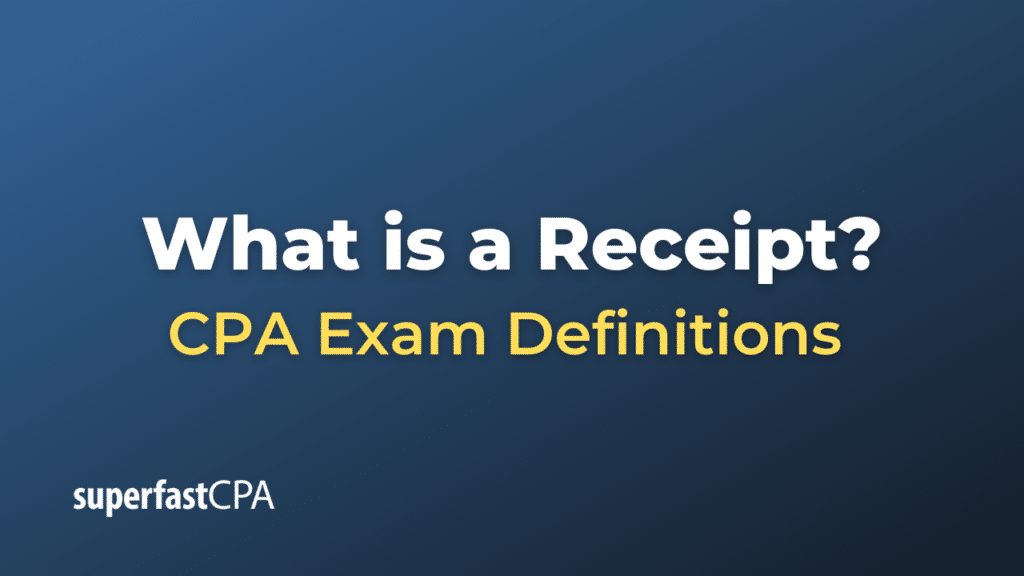Receipt
A receipt is a written acknowledgment that a specified article or sum of money has been received as an exchange for goods or services. In other words, it serves as proof of a completed transaction. Receipts are typically provided by the seller, merchant, or service provider to the buyer or recipient of the service.
Key Elements of a Receipt:
- Date: The date the transaction took place.
- Details of the Seller/Provider: Including name, address, and possibly contact information.
- Details of the Buyer/Recipient: Often a name or other identifier, though many retail receipts might not include detailed buyer information.
- Description of Goods or Services: A list of items purchased or a description of services provided.
- Prices: Individual prices of the goods or services, often along with any applicable taxes, discounts, or additional fees.
- Total Amount: The total sum paid by the buyer.
- Payment Method: Details about how the payment was made, e.g., cash, credit card, debit card, or check.
- Signature: Some receipts, especially more formal ones or those related to significant amounts or services, may include a space for signatures from both parties.
Types of Receipts:
- Paper Receipt: A traditional, physical copy, often printed at point-of-sale terminals or hand-written in some cases.
- Electronic Receipt (e-Receipt): Sent via email or another digital method, often for online transactions.
- Rent Receipt: Provided by landlords to tenants as proof of rent payment.
- Delivery Receipt: Acknowledgment that goods have been delivered, often signed by the recipient.
- Cash Receipt: A record of cash transactions.
Importance of Receipts:
- Proof of Transaction: They confirm that a transaction took place and that payment was received.
- Financial Record Keeping: Important for both businesses and individuals for tracking expenses and incomes.
- Tax Purposes: Necessary for claiming certain business expenses or tax deductions.
- Warranty or Returns: Often needed if you want to return or exchange a product or claim a warranty.
- Budgeting: Individuals can use receipts to track their spending patterns.
In some jurisdictions or for certain amounts, providing a receipt is a legal requirement for businesses. Whether for personal financial tracking, business accounting, or tax purposes, it’s generally a good practice to keep and organize receipts.
Example of a Receipt
Let’s consider an example of a receipt for a purchase made at a bookstore.
Sunrise Bookstore
123 Reading Lane
Booktown, BT 12345
Phone: (123) 456-7890
Website: www.sunrisebooks.com
Receipt
Date: August 10, 2023
Cashier: Emily
Customer: John Doe
Description of Items Purchased:
- “The Great Novel” – Hardcover: $25.00
- “Children’s Adventure” – Paperback: $10.00
- Bookmarker: $1.50
Subtotal: $36.50
Sales Tax (8%): $2.92
Total: $39.42
Payment Method: Credit Card (Visa) – XXXX-XXXX-XXXX-1234
Return Policy: Items can be returned within 30 days of purchase with this receipt. Damaged items will not be accepted.
Thank you for shopping with us!
This receipt provides a clear breakdown of John Doe’s purchase at the Sunrise Bookstore. It includes essential details like the date, items purchased, their prices, total amount, and the payment method. The return policy is also mentioned, ensuring that the customer knows the terms for potential returns. If John ever needs to return a book or account for his spending, this receipt will be crucial.












